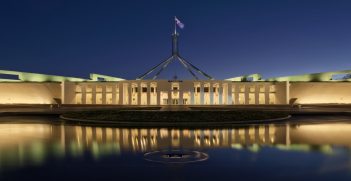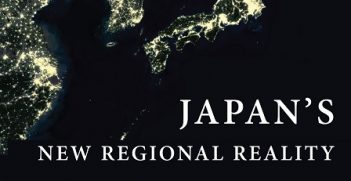DFAT Amalgamation: Thirty Years Since the Drama

Many of Australia’s foreign policy successes can be traced back to the milestone merging of the Department of Foreign Affairs and the Department of Trade 30 years ago this week. It was a bold initiative and it required special consideration and numerous initiatives to make it a success.
In one of the most ambitious reorganisations since federation, the Hawke government on 24 July 1987 reduced the number of Commonwealth departments from 28 to 18, the most successful amalgamation being the one between the Department of Foreign Affairs and the Department of Trade (and the much smaller unit Promotion Australia) to create the Department of Foreign Affairs and Trade.
Foreign minister Bill Hayden had persuaded Prime Minister Bob Hawke that Australian foreign policy should be securely intertwined with the advancement of Australia’s global commercial and economic interests and that the existence of two separate departments was not the optimal way of doing so. Hawke and Hayden were conscious that, as the intensity of the Cold War was diminishing, greater priority was being given worldwide to economic, as distinct from political, issues and relationships. They were also aware that there was continued growth in linkages between domestic and foreign policies. Hayden was convinced there would also be some cost savings and Hawke wanted to streamline an unwieldy ministry. Some within his Cabinet felt the Department of Trade had been too protectionist and some felt, quite wrongly, that the Department of Trade after 30 years under two powerful ministers/deputy prime ministers might have become too political and given too much support to the National/Country Party.
Smooth amalgamation
The integration’s success was built on three vital factors: a high degree of personal cooperation and goodwill between Bill Hayden and Michael Duffy, the newly appointed minister for trade negotiations; the adoption of a coherent conceptual framework developed by secretary of the new department Stuart Harris for the integration of foreign and trade policies; and the implementation of equitable arrangements for integrating staff from the three original departments into the new department.
Relations ‘across Kings Ave’ between Foreign Affairs and Trade had been uncomfortable, sometimes suspicious and at times even frosty. For a considerable period during Coalition governments, Trade had been a very powerful department, able to get its way with the support of deputy prime ministers John McEwen and then Doug Anthony.
In the period when foreign minister Andrew Peacock had ambitions to displace Malcolm Fraser as prime minister, the Department of Foreign Affairs suffered, whereas Fraser and his trade ministers enjoyed close cooperation. More generally, senior executives of the Department of Trade had for a long period viewed themselves as dynamic leaders of policy within government, though their special scorn, well-reciprocated, was reserved for the Treasury. Trade officers and trade commissioners also felt disappointed that the senior appointments of ambassador and high commissioner were not open to them.
New mandate
Stuart Harris, a distinguished economist, knew both departments well and was ideally suited to help Hayden ensure that the integration was as comprehensive as possible to maximise the beneficial linkages. At the outset, the Secretary of the Department of Trade, the gifted Vince Fitzgerald, had wanted a separate ‘Office of Trade’ sitting alongside a separate ‘Foreign Office’, but Harris told him this was not on and never would be. Hayden and Harris were very clear: the department was a new one with a new mandate and a new set of goals and objectives and had to be fully integrated. Systems for reconciling different policy objectives had to be open, especially so that the two portfolio ministers were aware of what was being done.
Hayden, Duffy, Harris and the four deputy secretaries—myself and Duncan Campbell from foreign affairs and Peter Field and Mike Lightowler from trade—knew an immediate requirement was to get out of Canberra and reassure the business community, the peak business councils, the major commodity councils, manufacturing, mining, agricultural and services interests that the new department would be accessible to all with an international commercial interest and would resolutely pursue Australian interests.
Harris knew trade, agricultural and resources issues intimately. I had spent seven years in Trade (as well as 22 years in Foreign Affairs) and had worked closely with Peter Field and Mike Lightowler. All of us were determined that the integration should be effected on a basis which was fair to all staff. The new department would need to be fully committed to promoting staff on merit. There would be no ‘we’ and ‘they’ in Foreign Affairs and Trade. All were acutely aware that exceptional younger officers—like Greg Wood, Peter Grey, Don Kenyon, David Spencer, Peter Hussin and many others—brought with them remarkable experience and trade negotiation skills and the new portfolio would need to give serious attention to skills development among new recruits.
Integration was helped considerably by taking place during a period of significant public sector reform, drawing on initiatives by successive prime ministers. For Foreign Affairs and Trade, the reforms affecting public sector staffing were the final nails in the coffin of the 19th-century notion of an exclusive, elitist diplomatic service where officers were selected only from among recent university graduates and where promotions were always from within. The Department of Foreign Affairs under Arthur Tange, and subsequently under Keith Waller and Mick Shann, had resolutely moved away from this model. The Hawke Government’s reforms enabled Harris as secretary to complete the process.
Within a short time the new department had both standing and confidence. It also had a strong domestic constituency, not just among Australian citizens for its role in passports and consular assistance, but in its relationships with the business and trade sectors after integration.
Australia’s success in developing free trade agreements, in diversifying trade, in managing major trading partners, in dealing with ASEAN and the EU, and initiatives such as APEC and the Cairns Group, are among some of the benefits successive governments have derived from an integrated Department of Foreign Affairs and Trade.
Philip Flood AO FAIIA is a distinguished former Australian diplomat and a former senior public servant. The highlights of Flood’s career include secretary of the Department of Foreign Affairs and Trade and high commissioner to the United Kingdom. He was ambassador to Indonesia and director-general of AusAID.
This article is published under a Creative Commons Licence and may be republished with attribution.





